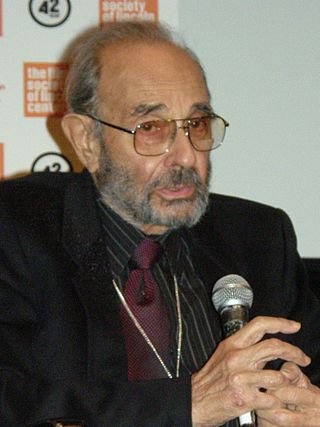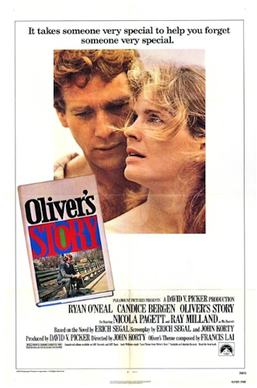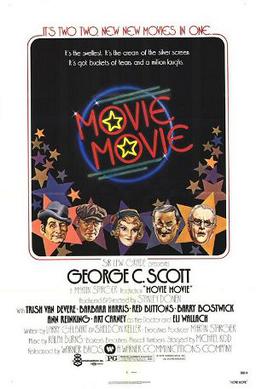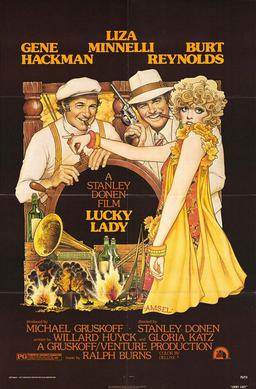
Kirk Douglas was an American actor and filmmaker. After an impoverished childhood, he made his film debut in The Strange Love of Martha Ivers (1946) with Barbara Stanwyck. Douglas soon developed into a leading box-office star throughout the 1950s, known for serious dramas, including westerns and war films. During his career, he appeared in more than 90 films and was known for his explosive acting style. He was named by the American Film Institute the 17th-greatest male star of Classic Hollywood cinema.

Charles Patrick Ryan O'Neal was an American actor. Born in Los Angeles, he trained as an amateur boxer before beginning a career in acting in 1960.

Charlie's Angels is an American crime drama television series that aired on ABC from September 22, 1976, to June 24, 1981, producing five seasons and 115 episodes. The series was created by Ivan Goff and Ben Roberts and was produced by Aaron Spelling. It follows the crime-fighting adventures of three women working at a private detective agency in Los Angeles, California, and originally starred Kate Jackson, Farrah Fawcett, and Jaclyn Smith in the leading roles and John Forsythe providing the voice of their boss, the unseen Charlie Townsend, who directed the crime-fighting operations of the "Angels" over a speakerphone. There were a few casting changes: after the departure of Fawcett, Cheryl Ladd joined; after Jackson departed, Shelley Hack joined, who was subsequently replaced by Tanya Roberts.

Farrah Leni Fawcett was an American actress. A four-time Primetime Emmy Award nominee and six-time Golden Globe Award nominee, Fawcett rose to international fame when she played a starring role in the first season of the television series Charlie's Angels.

Stanley Donen was an American film director and choreographer. Donen directed some of the most iconic films of the Golden Age of Cinema. He received the Honorary Academy Award in 1998, and the Career Golden Lion at the Venice Film Festival in 2004. Four of his films have been inducted into the National Film Registry at the Library of Congress.

Oliver's Story is a 1978 American romantic drama film and a sequel to Love Story (1970) based on a novel by Erich Segal published a year earlier. It was directed by John Korty and again starred Ryan O'Neal, this time opposite Candice Bergen. The original music score was composed by Lee Holdridge and Francis Lai. It was released by Paramount Pictures on December 15, 1978.
John Barry was a British film production designer, known for his work on Star Wars, for which he received the Academy Award for Best Art Direction.

Money: A Suicide Note is a 1984 novel by Martin Amis. In 2005, Time included the novel in its "100 best English-language novels from 1923 to the present". The novel is based on Amis's experience as a script writer on the feature film Saturn 3, a Kirk Douglas vehicle. The novel was dramatised by the BBC in 2010.

Harry O, sometimes spelled Harry-O, is an American private detective series that aired for two seasons on ABC from 1974 to 1976. The series starred David Janssen, and Jerry Thorpe was executive producer. Harry O followed the broadcast of two pilot films: firstly Such Dust as Dreams Are Made On and secondly Smile Jenny, You're Dead, both starring Janssen.

Farrah Rachael Forke was an American actress best known for her roles as Alex Lambert on the NBC sitcom Wings and Mayson Drake on Lois and Clark: The New Adventures of Superman. She also voiced the character Big Barda on the animated television series Batman Beyond and Justice League Unlimited, starred as Carey on the short-lived cult sitcom Dweebs, Nikki Harkin on Mr. Rhodes, Carol Ashby in the pilot episode of the 90's remake of Fantasy Island, and appeared in several made-for-TV movies such as Nurses on the Line (1993), Journey to the Center of the Earth (1993), Bionic Ever After? (1994), and theatrical movies like Disclosure (1994) and Heat (1995).

Logan's Run is a 1976 American science fiction action film directed by Michael Anderson and starring Michael York, Jenny Agutter, Richard Jordan, Roscoe Lee Browne, Farrah Fawcett, and Peter Ustinov. The screenplay by David Zelag Goodman is based on the 1967 novel Logan's Run by William F. Nolan and George Clayton Johnson. It depicts a utopian future society on the surface, revealed as a dystopia where the population and the consumption of resources are maintained in equilibrium by killing everyone who reaches the age of 30. The story follows the actions of Logan 5, a "Sandman" who has terminated others who have attempted to escape death and is now faced with termination himself.

Sunburn is a 1979 British-American comedy detective film directed by Richard C. Sarafian and written by James Booth, John Daly and Stephen Oliver. It is based on the novel The Bind by Stanley Ellin. The film stars Farrah Fawcett, Charles Grodin, Art Carney, Joan Collins, William Daniels and John Hillerman. The film was released on August 10, 1979, by Paramount Pictures.

Myra Breckinridge is a 1970 American comedy film based on Gore Vidal's 1968 novel of the same name. The film was directed by Michael Sarne, and featured Raquel Welch in the title role. It also starred John Huston as Buck Loner, Mae West as Leticia Van Allen, Farrah Fawcett, Rex Reed, Roger Herren, and Roger C. Carmel. Tom Selleck made his film debut in a small role as one of Leticia's "studs." Theadora Van Runkle was costume designer for the film, though Edith Head designed West's costumes.

Poor Little Rich Girl: The Barbara Hutton Story is a 1987 television biographical drama starring Farrah Fawcett. The film chronicles the life of Barbara Hutton, a wealthy but troubled American socialite. Released as both a television film and a miniseries, the film won a Golden Globe Award for Best Miniseries or Television Film. Fawcett earned her fifth Golden Globe Award nomination, for Best Actress in a Miniseries of Television Film. Poor Little Rich Girl: The Barbara Hutton Story was based on C. David Heymann's Poor Little Rich Girl: The Life and Legend of Barbara Hutton.

Movie Movie is a 1978 American double bill directed by Stanley Donen. It consists of two films: Dynamite Hands, a boxing ring morality play, and Baxter's Beauties of 1933, a musical comedy, both starring the husband-and-wife team of George C. Scott and Trish Van Devere. A fake trailer for a flying-ace movie set in World War I titled Zero Hour is shown between the double feature.
Martin Starger is an American entertainment entrepreneur. He led ABC Entertainment during its boom period in the 1970s, pioneering the creation of television shows such as ABC Movie of the Week, Marcus Welby, M.D. and Happy Days. He also pushed the limits of television broadcast presiding over pioneering miniseries and specials such as Roots and Rich Man, Poor Man.

Associated Film Distribution was a British film distribution company. It was set up in the 1970s by ITC Entertainment and EMI Films to distribute their films in the US.

Lucky Lady is a 1975 American comedy-drama film directed by Stanley Donen and starring Liza Minnelli, Gene Hackman, Burt Reynolds and Robby Benson. Its story takes place in 1930 during Prohibition in the United States.

Raise the Titanic is a 1980 adventure film produced by Lew Grade's ITC Entertainment and directed by Jerry Jameson. The film, written by Eric Hughes (adaptation) and Adam Kennedy (screenplay), is based on the 1976 book of the same name by Clive Cussler. The storyline concerns a plan to recover RMS Titanic to obtain cargo valuable to Cold War hegemony.

Somebody Killed Her Husband is a 1978 American comedy–mystery film directed by Lamont Johnson and written by Reginald Rose. It starred Farrah Fawcett and Jeff Bridges. Also in the cast were John Wood, Tammy Grimes and John Glover.


















